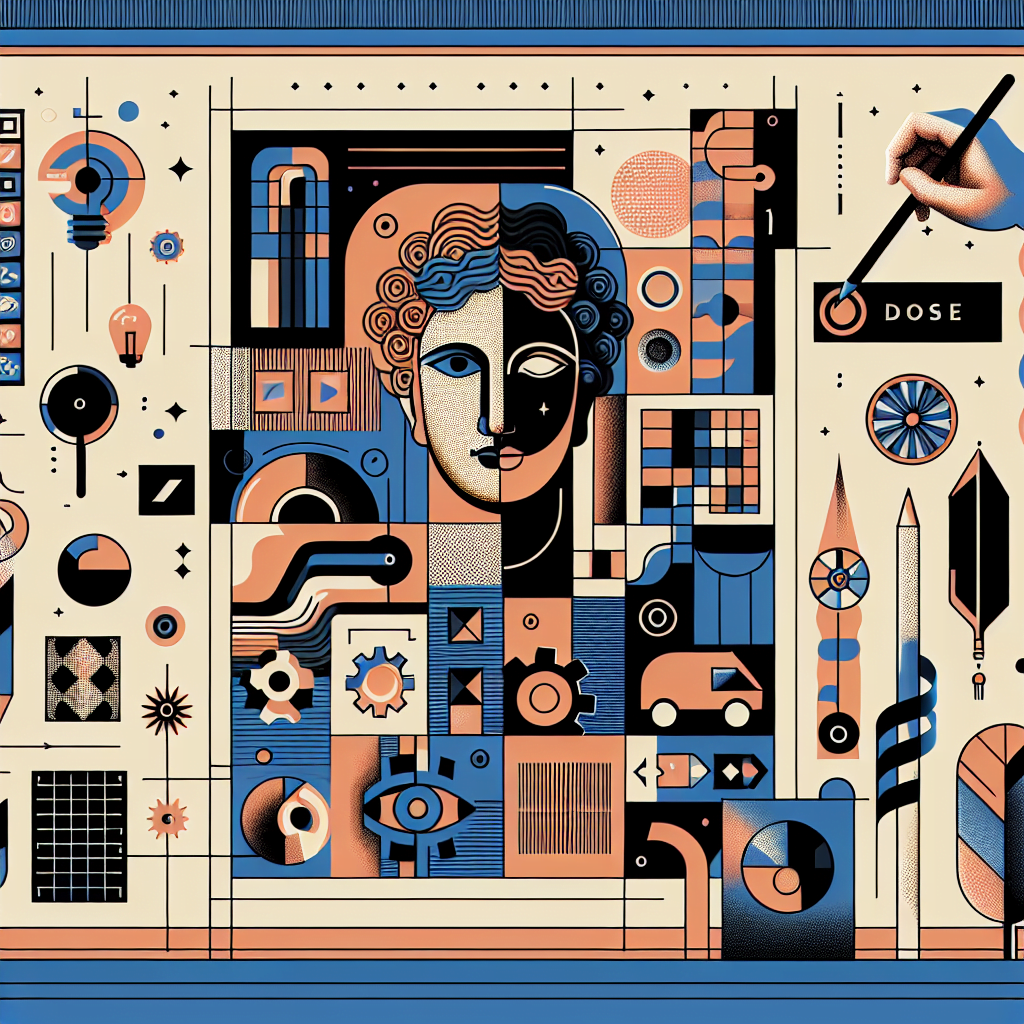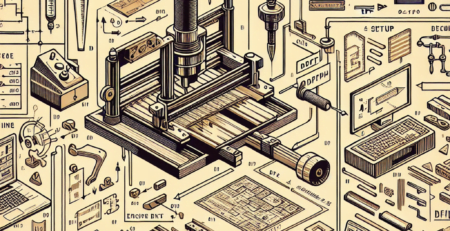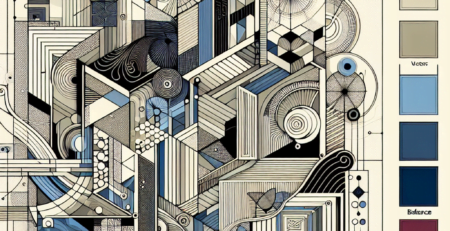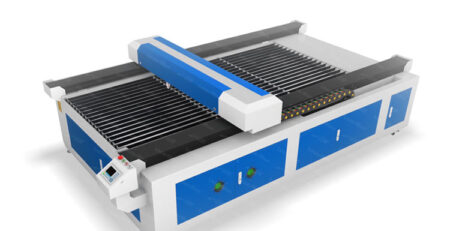Cómo elegir el software de diseño 2D adecuado para sus proyectos CNC
Tabla de contenido
“Unlocking Creativity: Guiding Your Path to the Perfect 2D Design Software for CNC Projects.”
Introducción
Choosing the right 2D design software for your CNC projects is a crucial step that can significantly impact the efficiency and quality of your work. This guide will provide you with a comprehensive understanding of the factors to consider when selecting a suitable 2D design software. These factors include the software’s compatibility with your CNC machine, its user-friendliness, the availability of support and training resources, and its ability to meet your specific design needs. By considering these aspects, you can ensure that you select a 2D design software that enhances your CNC projects and optimizes your design process.
Selecting the Perfect 2D Design Software for Your CNC Projects
Choosing the right 2D design software for your CNC (Computer Numerical Control) projects is a critical decision that can significantly impact the quality of your work. The software you select will determine the precision of your designs, the efficiency of your workflow, and ultimately, the success of your projects. Therefore, it is essential to consider several factors before making your choice.
Firstly, it is crucial to consider the compatibility of the software with your CNC machine. Not all software is compatible with every CNC machine, and using incompatible software can lead to errors and inefficiencies. Therefore, it is advisable to check the specifications of your CNC machine and ensure that the software you choose can support these specifications.
Secondly, the complexity of your projects should guide your choice of software. If your projects are relatively simple, you may not need advanced software with numerous features. However, if your projects are complex and require intricate designs, you may need to invest in more sophisticated software. It is also worth noting that some software is better suited for specific types of projects. For instance, some software is ideal for woodworking projects, while others are more suitable for metalworking projects.
Thirdly, consider the user-friendliness of the software. If you are a beginner, you may want to choose software that is easy to learn and use. On the other hand, if you are an experienced designer, you may prefer software that offers more advanced features, even if it has a steeper learning curve. In either case, it is beneficial to choose software that has a well-designed user interface and provides helpful tutorials and customer support.
Fourthly, the cost of the software is another important consideration. The price of 2D design software can vary widely, from free software to premium software that costs hundreds or even thousands of dollars. While it may be tempting to choose the cheapest option, it is important to remember that you often get what you pay for. Free or inexpensive software may lack important features or offer poor customer support. Therefore, it is advisable to consider the value that the software provides rather than just the price.
Lastly, it is beneficial to read reviews and get recommendations from other CNC designers. This can provide valuable insights into the strengths and weaknesses of different software. However, keep in mind that what works well for one person may not necessarily work well for you. Therefore, it is important to consider your own needs and preferences when evaluating these reviews and recommendations.
In conclusion, choosing the right 2D design software for your CNC projects involves careful consideration of several factors, including the compatibility of the software with your CNC machine, the complexity of your projects, the user-friendliness of the software, the cost of the software, and the reviews and recommendations of other designers. By taking the time to evaluate these factors, you can select the software that best meets your needs and helps you achieve success in your CNC projects.
A Comprehensive Guide to Choosing the Right 2D Design Software for CNC Projects

Choosing the right 2D design software for your CNC (Computer Numerical Control) projects can be a daunting task, especially with the plethora of options available in the market. However, understanding your specific needs and the features of different software can significantly simplify this process.
To begin with, it is crucial to identify your project requirements. The complexity of your CNC project will largely determine the type of 2D design software you need. For instance, if you are working on a simple project, a basic 2D design software with essential features would suffice. On the other hand, complex projects may necessitate advanced software with a wide array of features such as layering, detailing, and precision tools.
Once you have a clear understanding of your project requirements, the next step is to consider your budget. The cost of 2D design software can vary significantly, ranging from free versions to premium ones that cost hundreds of dollars. While free software may be tempting, they often lack advanced features and customer support. Premium software, although expensive, usually offer a comprehensive set of tools and excellent customer service. Therefore, it is advisable to choose a software that not only fits your budget but also offers the best value for money.
The user interface of the software is another critical factor to consider. A software with a user-friendly interface can save you a lot of time and effort. It should be intuitive and easy to navigate, even for beginners. Moreover, the software should offer a smooth learning curve, allowing you to gradually master its features without feeling overwhelmed.
In addition to the user interface, the compatibility of the software with your CNC machine is also important. Not all software are compatible with every CNC machine. Therefore, ensure that the software you choose can seamlessly integrate with your CNC machine. This will not only ensure smooth operation but also prevent potential technical issues that could disrupt your project.
The availability of customer support is another aspect that should not be overlooked. Regardless of how user-friendly and compatible the software is, you may encounter issues that require professional assistance. Therefore, opt for software that offers reliable customer support, preferably 24/7. This will ensure that any issues you encounter can be promptly resolved, minimizing downtime.
Lastly, consider the reputation of the software provider. A provider with a good reputation is likely to offer high-quality software and excellent customer service. You can gauge the reputation of the provider by reading online reviews and testimonials. These will give you insights into the experiences of other users, helping you make an informed decision.
In conclusion, choosing the right 2D design software for your CNC projects involves careful consideration of several factors. These include your project requirements, budget, the user interface of the software, its compatibility with your CNC machine, the availability of customer support, and the reputation of the software provider. By taking these factors into account, you can choose a software that not only meets your needs but also enhances the efficiency and quality of your CNC projects.
Navigating the World of 2D Design Software for Optimal CNC Project Outcomes
Choosing the right 2D design software for your CNC (Computer Numerical Control) projects can be a daunting task, especially with the plethora of options available in the market. However, understanding your specific needs and the features of different software can significantly simplify this process. This article aims to guide you through the world of 2D design software to help you make an informed decision for optimal CNC project outcomes.
To begin with, it is crucial to understand the nature of your CNC projects. Are you working on simple or complex designs? Do you need to create intricate patterns or straightforward cuts? The complexity of your projects will largely determine the type of software you need. For instance, simple projects may only require basic design software, while complex ones may necessitate advanced software with a wide range of features.
Next, consider the user interface of the software. A user-friendly interface can make the design process smoother and more efficient. Look for software that offers intuitive controls, clear instructions, and easy navigation. This will not only save you time but also reduce the likelihood of errors during the design process.
The compatibility of the software with your CNC machine is another critical factor to consider. Ensure that the software you choose can seamlessly communicate with your CNC machine. This will facilitate a smooth transition from the design stage to the actual cutting or engraving process. Some software is specifically designed for certain CNC machines, so it’s worth checking if there’s one for your specific model.
The availability of technical support and resources is also an important consideration. Even with the most user-friendly software, you may encounter challenges or have questions. Therefore, choose software from a company that offers robust customer support, including tutorials, FAQs, forums, and direct support through email or phone.
Moreover, consider the cost of the software. While some high-end software can be quite expensive, there are also affordable options that offer a good range of features. It’s essential to balance cost with functionality. Remember, the most expensive software isn’t necessarily the best for your needs. Consider your budget and the value that the software will bring to your projects.
Lastly, consider the scalability of the software. As your skills and projects grow in complexity, you’ll want software that can grow with you. Look for software that offers advanced features that you can use as you become more experienced. This will save you from having to switch software down the line, which can be both time-consuming and costly.
In conclusion, choosing the right 2D design software for your CNC projects involves careful consideration of several factors. These include the nature of your projects, the user interface, compatibility with your CNC machine, availability of technical support, cost, and scalability. By taking the time to evaluate these factors, you can choose software that not only meets your current needs but also accommodates your future growth. Remember, the right software can significantly enhance the quality of your CNC projects and make the design process more enjoyable and efficient.
Conclusión
In conclusion, choosing the right 2D design software for your CNC projects involves considering factors such as the software’s compatibility with your CNC machine, its ease of use, the complexity of your projects, and your budget. It’s also important to consider the software’s features, such as its design and editing tools, its ability to import and export different file formats, and its support for different types of materials. Additionally, the availability of customer support and online tutorials can also influence your decision. Ultimately, the right 2D design software should be able to meet your specific needs and help you achieve your project goals efficiently.





Deja una respuesta